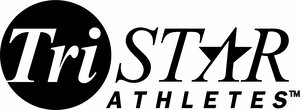Ever wonder how hard you should go? At Tristar athletes we have different racing outputs for our athletes based on their race potential and ability. See how you should pace your next race.
Athlete Resources, Pacing, zones

The best kept secret in coaching
Athlete Resources, Pacing, zones
Athlete Resources, Pacing, Racing, Biking
TriStar Athletes, drafting and TRIATHLON is not legal! However, the concept of riding draft legal is not. On flatter courses and portions of flat parts of hilly courses; riding up to the draft zone and coasting can be an opportunity to save energy for not only the bike but also the run. In this coaches corner briefing our coaches teach you how to ride draft legal for max time savings on both the bike and run.
Tristar Athlete, you have done the training and have your race plan loaded and ready to go. When to ride hard vs ride easy is a science when racing. Wind sheer that greets you as your ride is exponential in nature, meaning it takes much more power to ride even one mile an hour faster and especially true the faster you go. In fact, eventually there is a terminal velocity that even the strongest of cyclists will face.
Testing your power in running periodically is important to you training and training zones working with your Tristar Coach. While power in running varies less so than cycling power, keeping an accurate rFTPw (or threshold power. r = “running” and Pw = power. rFTPw) is important towards determining your total load and intensity of your program.

One of the major advantages to running with power is that we can clearly define your intensity.
rFTPw is a strong indicator of your race potential and overall potential.
it is the metric used to calculate all intensity in your Tristar plan and program.
All of your run power zones are calculated off this single number.
Do you need to test all the time? No, you can use running data from races and or training to support your rFTPw.
if you switch from one run powermeter manufacturer to another recognize your rFTPw will be different and then you would want to retest.
Tristar testing sets for power; We use two power tests, one which is shorter call the “3/9” TEST, and a “30min run TT (Time Trial)”. The 3/9 test is shorter and does not require as much recovery however the accuracy for the 30min run TT may be better depending on your ability to pace. Your coach will key you in to which test is best for you, your goals and plan. Note; during your testing you will also find your rFTPa (r = run, F = Functional, T = Threshold, Pa = pace) which is helpful when learning how to run at a goal speed or effort beyond power. You will have both FTP’s set in training peaks.
Races: races 5K-13.1mi road races can help determine your rFTPw depending on your ability and time it takes to do each race distance. Example, slower athletes may use 10K as their rFTPw proxy.
Run rFTPw changes regularly. When you stop training threshold power in running will drop, with extended detraining lowering your rFTPw will be critical. Conversely, when you are training a lot at just below or just above run threshold power you may need to update and increase your rFTPw.
What happens if you don’t have an accurate rFTPw? …When set too low this can overstate your actual fitness and your gains may not be as great as they could be in training. … when set too high this can underestimate the total training load and you can get sick or injured.
Half Ironman, TSS, Coach Cliff Scherb, Pacing